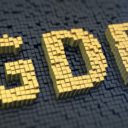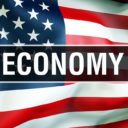
The Commerce Department’s second reading on U.S. GDP shows the economy expanded at an annual rate of 2.5% in the second quarter, matching a previous estimate. Economists expected GDP to grow by 2.6%.
The Labor Department reports claims for initial jobless benefits fell to 305,000 last week from an upwardly revised 310,000 the week prior. Economists expected the number of claims to rise to 325,000 from an initially reported 309,000. The Labor Department said computer issues that caused a backlog of unprocessed claims have been resolved.
This is the second reading of GDP since the Commerce Department changed how it would calculate the measurement. The measurement now calculates future government investment, future Hollywood productions, and a host of otherwise untraditional measures of production. When the news was announced it was widely seen as a government gimmick to mask anemic economic growth.
Also in the report, the Commerce Department said its price index for consumer purchases, which is the Federal Reserve’s preferred gauge of inflation, fell at a 0.1 percent rate.
That is a troublesome sign for the national economy, because it suggests businesses have little leverage to raise prices. It was the first decline since the first quarter of 2009, which were some of the worst days of the 2007-09 recession.
Even stripping out volatile food and energy costs, prices rose at only a 0.6 percent rate, also the weakest reading for this so-called core category since early 2009.
The report also showed government austerity dragged on U.S. economic growth a little less in the second quarter than initially estimated, chipping about a tenth of a point off the growth rate.






